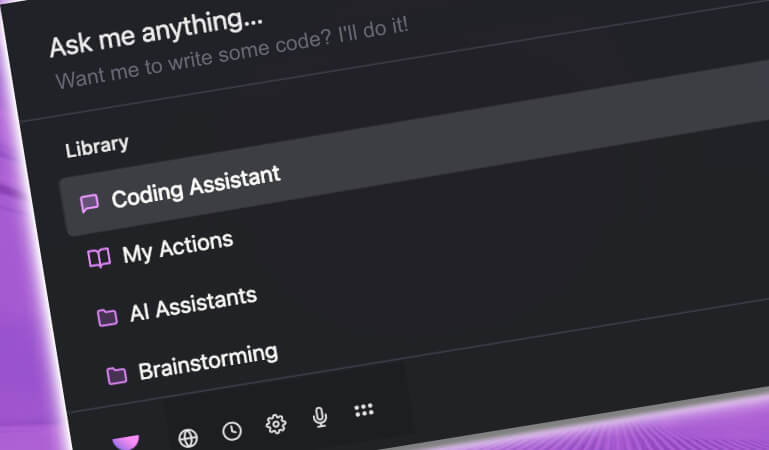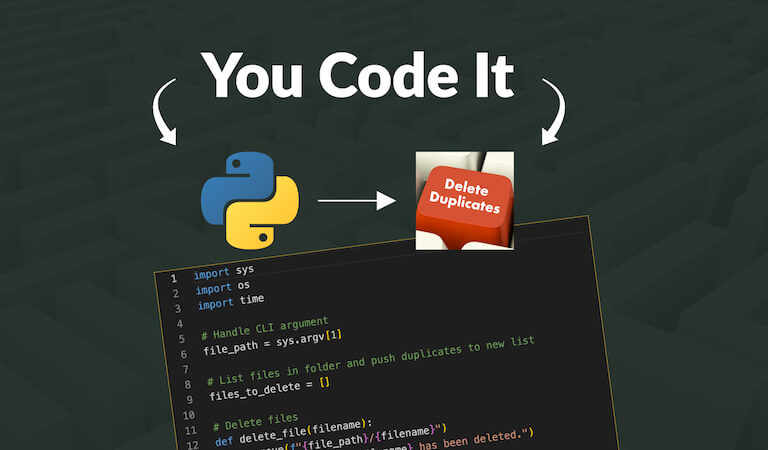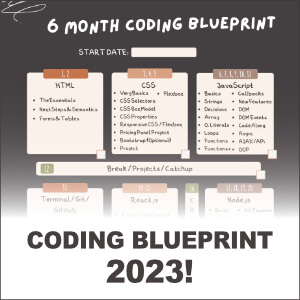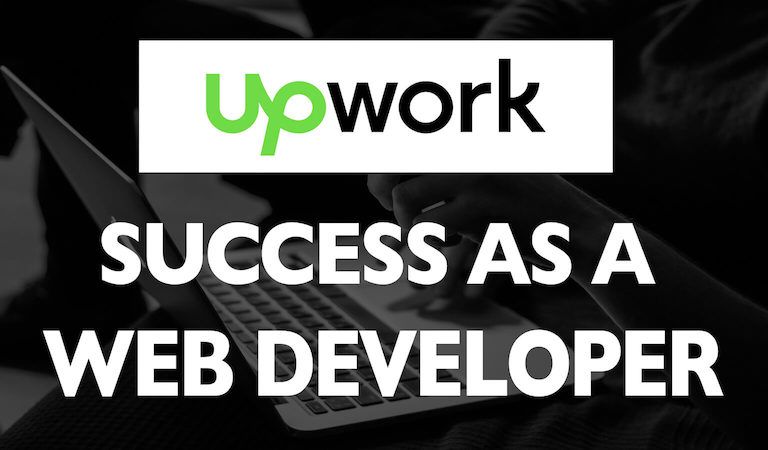5 Steps to Become a Freelance Web Developer in 2019
We largely overcomplicate this matter of freelancing. Freelancing is simply this: Someone has a problem. You solve it.
Some freelancers have an elaborate business while others are solely word of mouth. In both scenarios, the bottom line is meeting the need of another. Thus the goal is to make yourself known, and provide good work.
This year I believe you could easily at least freelance on the side and make some cash. If it goes well, you may be able to transition to it full time.
But the question remains: What steps to you need to take to become a freelance web developer? Is there a process? … a proven path to success?
Let me give you my take, as one who actually went full time as a freelancer:
Here are 5 steps to become a Freelance Web Developer in 2019:
Video Version – (or watch on YouTube)
If you prefer to read the article instead of video, keep reading:
Foundational
1. Learn to Code
Obviously right?
But the barrier for many here is the realization that you don't need to be a master developer to do freelance work. I've said it again and again: 50% of all I do as a freelancer falls in the CSS category. It's bloggers looking for design changes, digital marketers looking for landing pages, etc.
HTML and CSS are requirements, and from there you can land a lot of freelance work.
On top of this, PHP/WordPress and a base knowledge of JavaScript will help you get your mittens on many more freelance projects.
So step #1, learn to code. Without this you simply cannot become a freelance web developer. If you know at least HTML and CSS well, then move to step 2.
If you need to fulfill this requirement and want to follow a solid Learn to Code Blueprint, then go sign up for my recently launched Learn to Code Blueprint Course.
2. Create a Website
This should happen from the very outset.
Having a website contributes in a number of very important ways towards your freelance career:
- It shows clients your commitment to your business and web development pursuits.
- It allows you to display your projects to clients so they can confirm your competency
- It allows you to add value and contribute back to the web development community by publishing relevant and informative articles.
- With the proper SEO strategy, it puts you in the search results for local businesses seeking your services.
So don't skimp on this step. Also, don't settle for a Wix site (because you are a real developer right?) or a Github hosted site (yes we love Github, but the URL looks unprofessional and tells the client you are not serious).
So secure hosting and a domain, find a WordPress theme, and publish that first post now.
Get Hosting and a Free domain with Bluehost for only $3.95 a month with this link. Then install WordPress (free) and you're all set.
Growth
3. Create and take any work you can
There are two parts to this: Create and Take.
Create:
Here's a little secret of mine: Make it a habit to actively talk to people about their business.
For instance: I was at a local Health Foods store here a month or so ago, and I saw a bunch of little newsletter/flyers at their checkout listing all their products on sale. I also noticed that they recently had a marketing-driven "store makeover."
So I asked, "Hey who does your marketing here, it seems you guys have had a bunch going on lately." She answered with the company name. Then I asked, "Did they revamp your website or are they providing website-based services for you."
Unfortunately, they were, but hey, if you get in the habit of asking people about their business, and in turn finding some sort of value to provide for them if they mention a "pain point," then you are creating potential work for yourself and value for them. Make this a habit. In the scenario above, the #1 thing to do then is to hand them your business card. Sadly I … didn't have any.
Take:
When you are starting off freelancing and need work and clients, take all that you can get, even if it's low pay. You may gain a long-term client from it. Even better, you can ask them to refer their friends and co-workers to you. Listen to me…..Referrals are EVERYTHING!
On top of these, you will be building up a solid portfolio as proof to future clients.
Another place to find great freelance work when you are just starting out is Upwork. Yeah, yeah, I know you've heard negative things, but the people who have open minds to it are making $85/hr on there easily!
In fact, I started off on Upwork and still get lots of proposals even today. It's a great place to begin to become a freelance web developer.
Here's an article I wrote that may just help you out a bit:
How to Make Extra Money On Upwork While Learning To Code

4. Build up a Client & Project list
Once you start taking jobs, you'll want to put those projects on your website. You also will want to discuss how the project went down, i.e. the client's need, the proposed solution, and the final showing.
You will also want to keep in touch with these clients.
Here's another secret: Once a client has found a reliable web developer for their site, nine times out of ten you are their's for life. Why? Because people either have had bad experiences with developers or they are very reluctant to give control of their site or project over to someone they don't know or trust well. Once you prove yourself to them, they DO NOT want to have to shop around anymore.
So stay on good terms, check in periodically, and send them a Christmas card.
Better yet, offer to host their website and provide maintenance via a Website Care Plan. This is a win/win for you both as you can charge a monthly retainer fee, and they can focus on their business and let you handle the "techie" stuff (which can be managed very easily with ManageWP.
Here's an example of the maintenance plans I offer to clients if you need a starting point.
You can also search and apply for the latest freelance web developer jobs here
Stability
5. Perfect your Process
So you have the skills, the website to back it up, work, and a growing client list. Now you should start looking at your process.
Here are some things to get ironed out:
Client onboarding process: How do you qualify leads? The best way is to have some sort of website application or project questionnaire for the client to fill out before you even talk with them. This allows you to gain lots of info from them up front and decide if this is a project that would be beneficial for you to work on.
Workflow: What does your process look like from Discovery to Design to Development to Deployment. Sit down and write it out. Perfect it. Hold the client to it.
Proposals: After you send a few proposals, create a master template of what has worked best for you. This way you only need to tweak it to match each client's differing needs.
The most full-featured and most affordable proposal system out there is found in my favorite app, Plutio, among many other great tools.
Care Plans: What happens when the site is complete? Who cares for the website? Who updates, creates backups, monitors uptime or performance, does development, etc? Will they call you 6 months down the road stating their site is hacked because they never updated anything?
Have a couple of website care plans ready to offer. It's a great source of recurring income for your business.
Followup: If the client parts ways after the build, when will you follow up? It's good to check-in after a period of time to see if everything is still running smooth and to see if any work needs to be done.
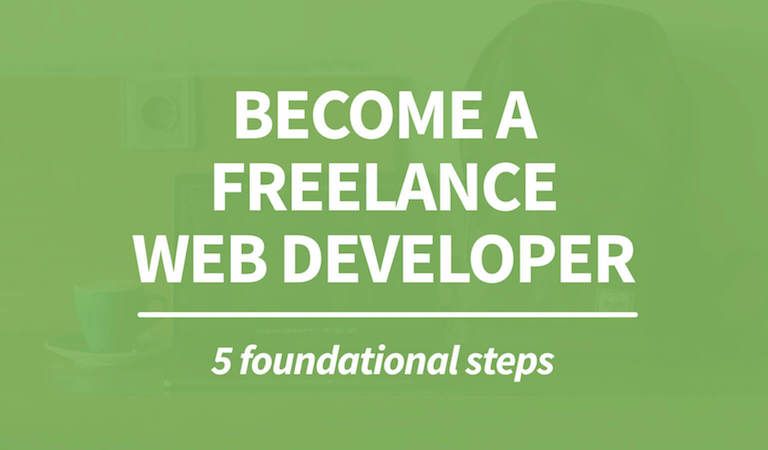
Conclusion
So we've looked at 5 steps to become a freelance web developer in 2019:
- Learn to code
- Create a website
- Create and take on any work you can
- Build up a client and project list
- Perfect your process
Be confident in your skills and go meet the needs of others. Best of luck to you!
Check out my detailed journey from Codenewbie to Full-Time Freelance in this FREE EBOOK:
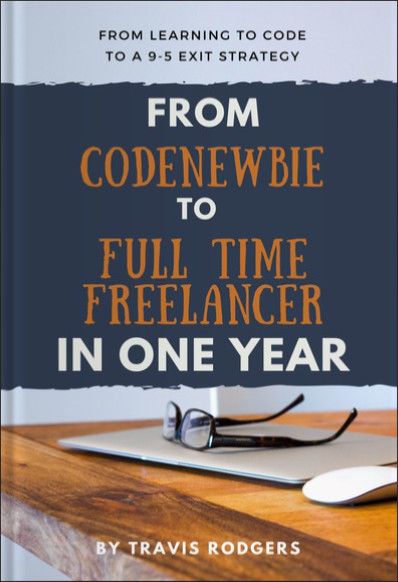
----------
** This article may contain affiliate links. Please read the affiliate disclaimer for more details.

